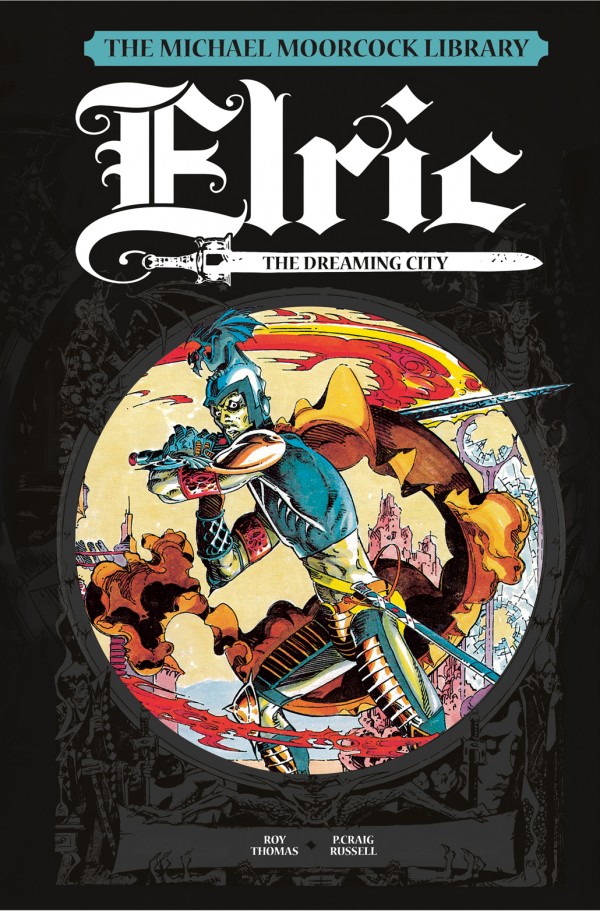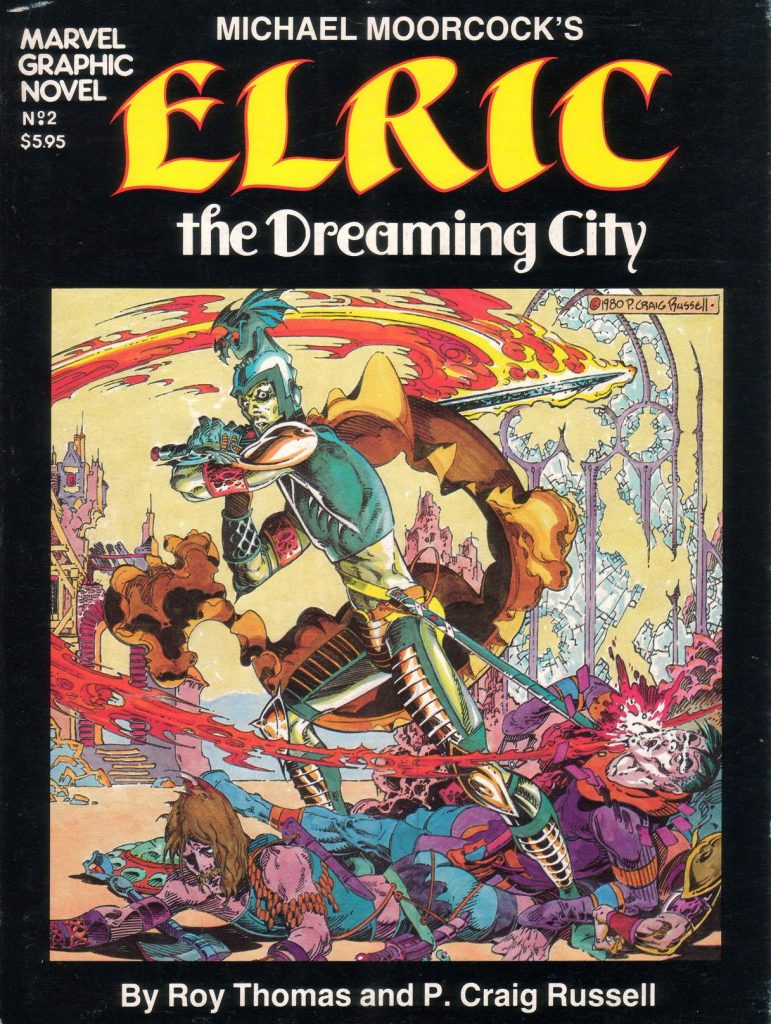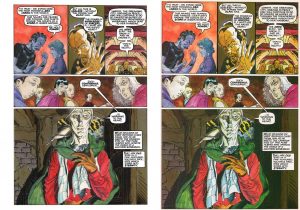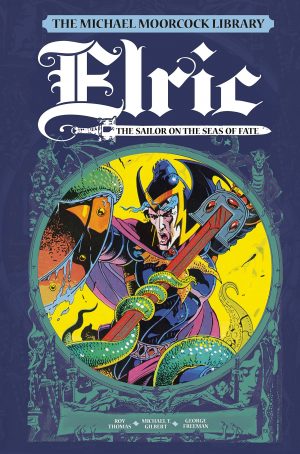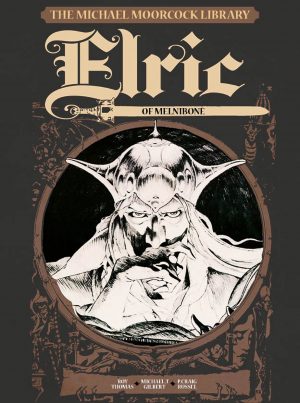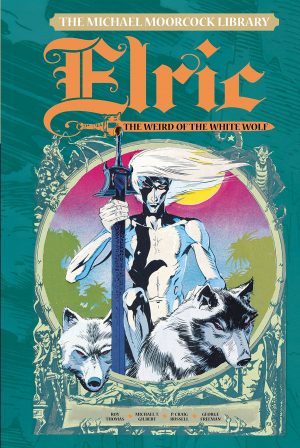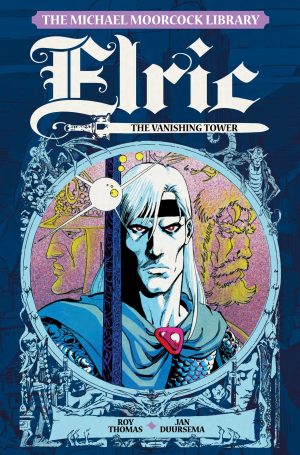Review by Ian Keogh
This adaptation of Michael Moorcock’s fantasy novel was the second in Marvel’s early 1980s line of original graphic novels. The line eventually sank into mediocrity, but the early aspirations of presenting exceptional work worthy of what was then considered a luxury format are present and correct in the extraordinary art of P. Craig Russell. He embraces the light, and combined with a natural delicacy applied to every single panel it results in page after page to embed in the memory. Decoration, however, never overwhelms the storytelling, and the opening pages present an example of his strength in that regard. It’s a strong scene-setting sequence that also introduces the cast, and by extension and reputation, the missing Elric. A group of men are gathered in a tavern about to embark on an invasion of Imrryr, known as the Dreaming City, but they’re relying on Elric to nullify its magical defences. Roy Thomas is exemplary in defining their differing characters, these united lords of the sea, and while the accompanying gothic touches of background lightning may be slightly over-egging, Russell likewise impresses with a suitably imposing introduction of Elric.
Elric has personal reasons for agreeing to use his formidable sorcerous talents, primarily to enact revenge on his cousin, his condition for aiding the sea lords being they destroy the city. Before helping them, however, he has a mission to perform and sets sail for Imrryr.
Moorcock drew on the trappings of heroic fantasy to create Elric, and Thomas by 1982 was an old hand at successfully adapting such material, knowing how to drill down to the essential elements of what needed to be a visual presentation. Elric himself was deliberately designed to contradict the typical fantasy hero, albino, gaunt and awkward, and Russell brings this through, the design ideal for his pre-Raphaelite influences, yet he can also supply suitably meaty and glorious battle scenes. The story demands them on an epic scale.
In terms of Moorcock’s continuity for his hero, The Dreaming City is when Elric first realises he and his sword Stormbringer have a co-dependent relationship, which is part of what makes him such a tragic hero. And because tragedy is never more than a step away, tragedy is what plays out in a compelling and beautifully illustrated fantasy drama.
As the sample art shows, Russell considered the original presentation too vivid (sample art right), and re-scanned his original art for the 2016 Michael Moorcock Library version. It still presents a glorious spectacle, but just not as brightly. With the 1982 version still easily available it presents a choice. One of them is essential for the shelves of any fantasy fan. Alternatively there’s a different interpretation of the story in the French-produced adaptation translated for English publication in 2022 and also titled Elric: The Dreaming City.
